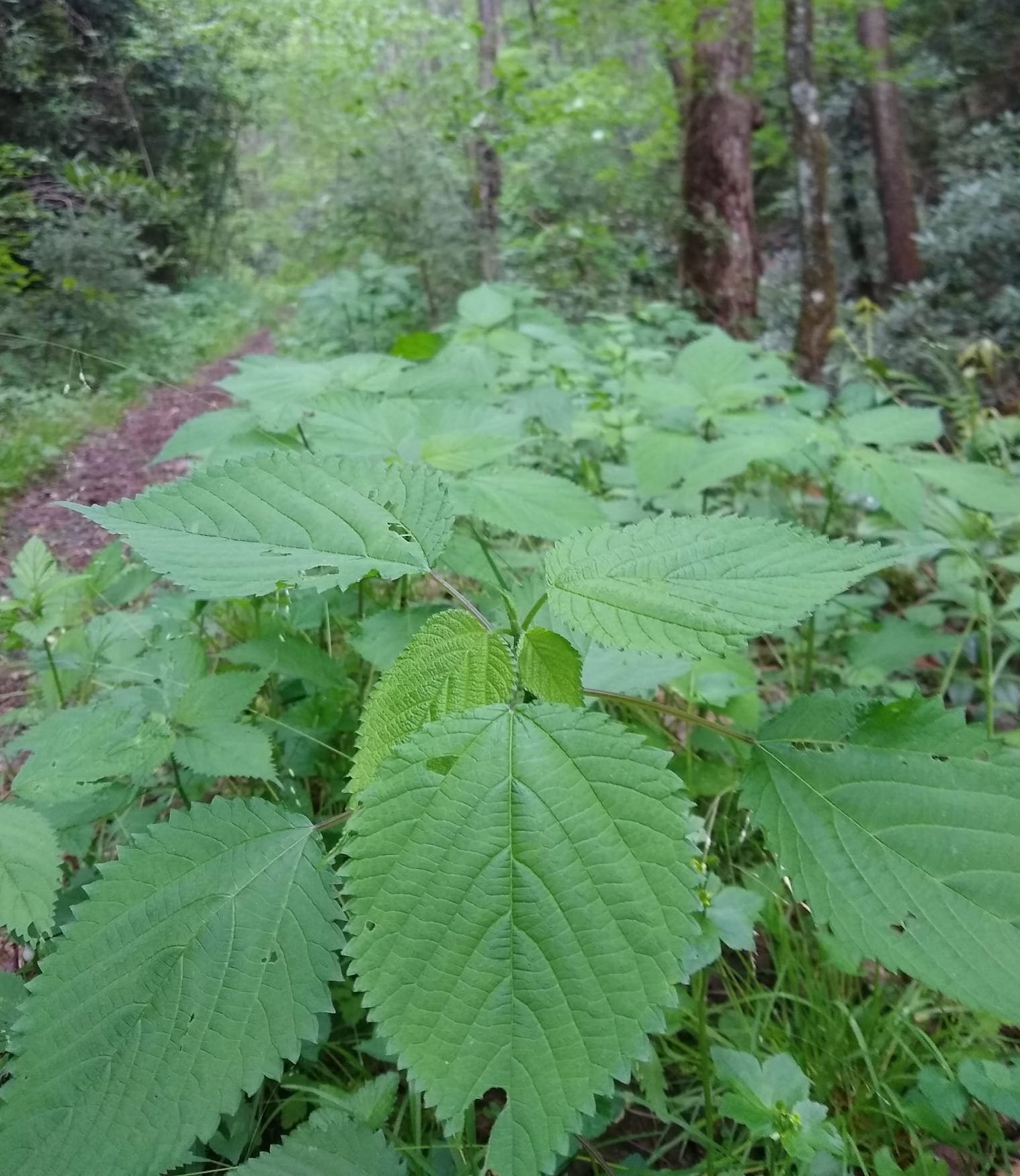How to Harvest Wood Nettles
At this time of year the Eastern Woodlands are abundant in Woods Nettles (Laportea canadensis). They are usually found in lower laying areas along creek bends and where water gathers. They are native to these woods and have been used by peoples here as both food and medicine[1]. They are one of our favorite spring greens. We have been out gathering baskets full to eat now and dry for later.
They are cousins to the Stinging Nettle (Urtica dioica) who like to live in the open where there is more sunlight. They have a clear pattern of opposite leaves while the woods nettles have an alternate leaf pattern. They both belong to the same botanical family.
They are so common that it is easy to overlook them and label them as a weed, but they are a rich source of many beneficial functional and medicinal compounds including: terpenoids, carotenoids, fatty acids, essential amino acids, chlorophyll, vitamins, tannins, carbohydrates, sterols, polysaccharides, isolectins and minerals [2]. They are extremely high in vitamin A and C as well as iron and protein.
Wood nettles growing by the creek
They do have pesky stingy hairs but they don’t sting as much as Stinging Nettles and it really only lasts a minute or two so don’t let that put you off. As soon as they are dried or cooked the sting goes away.
They are simple to harvest. Here’s Chris demonstrating how it’s done:
Nettle and Mushroom Soup Recipe
You can use nettles in place of spinach in pretty much any recipe. This soup is super simple and really delicious.
Make a mushroom broth (you can skip this and use store-bought broth in a pinch):
Sauté onions in oil or butter for a couple of minutes
Add a chopped carrot and celery stalk
Sprinkle with salt and a little more butter
Put the lid on and let the vegetables sweat for a few minutes (don’t let them brown)
Add fresh or dried mushrooms, whatever you have, oysters, shiitakes, lion’s mane, and chestnuts are all good for this.
Throw in some herbs, e.g. thyme, rosemary, oregano, sage, etc.
Cover with water and bring to a boil
Put the lid on and let it all gently simmer for 30 minutes. That’s long enough to extract the flavor
Strain out the matter and reserve the broth
Build the soup
Wash the nettle tops you have gathered
Sauté more onion in oil or butter until it releases its flavor
Add some carrot, celery or leek
Throw in the nettles. You can fill the pot up, they will reduce down very quickly
Mix the nettles with the other vegetables
Pour the broth over and bring to a boil
Simmer gently for 20 minutes
Blend the entire thing
Add salt and pepper to taste
Serve
You can serve as is, or:
Stir in a swirl of cream
Add chunks of blue cheese (try a Stilton!)
Sprinkle with crispy onions or fresh chives
Whatever grabs ahold of you that day!
Dark green, nutrient dense, nettle soup
https://opensiuc.lib.siu.edu/cgi/viewcontent.cgi?article=1480&context=ebl
Kregiel, D., Pawlikowska, E., & Antolak, H. (2018). Urtica spp.: Ordinary Plants with Extraordinary Properties. Molecules (Basel, Switzerland), 23(7), 1664. https://doi.org/10.3390/molecules23071664


